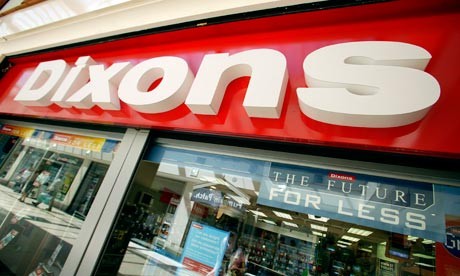How the Dow survived the tech meltdown
Post on: 22 Май, 2015 No Comment

How an irrelevant index survived the tech meltdown.
The strange place the Dow occupies today can be ascribed to the difference between how this ancient, 107-year-old index and ones of more recent vintage are calculated. The Dow is a price-weighted index. Every time one of the stocks in it moves up one dollar, the Dow moves up a set number of points. In the real world, a dollar move in a $100 stock has an entirely different meaning than a $1 move in a $10 stock—but the Dow regards them as equal. By contrast, newer indexes like the S&P 500 and the Nasdaq are free-floating market-capitalization indexes, in which a stock’s influence on the index is directly tied to a company’s overall market value. The Dow’s old-school methodology makes it disconnected from what’s really going on in the market. And yet, its stubborn adherence to antediluvian calculations has insulated the Dow from some of the ill effects of the late stock bubble.
When Charles Dow created the average in 1896, its 12 original constituents included names familiar to today’s investors, such as General Electric, and long-disappeared titans such as LaClede Gas and Tennessee Coal & Iron. (The index expanded to its current number of 30 in 1928. Here ‘s a fact sheet on the DJIA.) Dow would tote up the prices of the stocks in the index and divide them by the number of stocks to establish the average. Back in 1896, nobody ever thought about market capitalization, says Sybille Reitz, an official at Dow Jones’ indexes unit. And there were no tools to receive or process the data you needed to compile an index based on market capitalization.
By limiting its membership to 30 companies, the Dow favors giant companies. But once you’re a member, it’s not your size that counts but by many how points your stock rises relative to those of your colleagues. And so today, 3M, whose stock trades at 126 but is worth about $49 billion, is the most influential stock in the Dow. When 3M rises 1 percent it exerts as much gravitational pull on the Dow as when General Electric, a $23 stock worth $230 billion, moves 5 percent.
Another wrinkle: In the S&P 500, when a stock splits, it has no impact on market weighting. The value of the company doesn’t change, after all. But in a price-weighted index, a split chops a stock’s influence in half. After its split in February, Microsoft (which owns Slate ) will trade at about 25, and its $268 billion market cap will mean less to the Dow than International Paper’s $17 billion. In fact, 3M counts for more in the index than General Electric, Citigroup, Exxon Mobil and Microsoft will after the latter’s share split, Barron’s perpetually sharp Michael Santoli noted last week. This is a stark distortion considering that those four heavies have a combined market value of more than $900 billion, compared with $50 billion for 3M.
Such distortions render the Dow of dubious utility to professional investors. By weighting the prices of a small number of stocks, instead of the market capitalizations of a large number of stocks, the Dow fails to capture the true effects of money flowing in and out of the market as a whole. That’s why money managers prefer to use broader market-cap weighted indexes to help create their own portfolios and benchmark their own performances. Indexes are also licensed to fund managers and financial services firms, who roll out funds and other products based on them. Here, too, the Dow lags. Dow Jones says about $5.5 billion is invested in Dow-branded products (not including derivatives). By comparison, about $1 trillion is indexed to the S&P 500.
During the 1990s, the Dow’s structure insulated it from the technology boom that granted massive market caps to the newish companies that populated the Nasdaq and, to a lesser degree, the S&P 500. As a result, the Dow lagged both the S&P 500 and the Nasdaq for much of the decade. But just as the Dow’s structure insulated it from the boom, it also buffered it from the impact of the bust, for two reasons. I’ve explained how the S&P 500’s market-weighting bias led it to add many bubble-inflated companies after they inflated. By comparison, the Dow granted entrance to new members the way Augusta National does—slowly. When it did initiate technology companies, the Dow granted privileges only to blue chips with long operating histories like Hewlett-Packard, Microsoft, and Intel—not supernovas like Conexant and Global Crossing.

The Dow’s price-weighting limited—and still limits—the influence of these newcomers, which were generally afforded higher price-to-earnings ratios than their old economy counterparts and were prone to split. Today, the Dow’s six tech and telecom stocks account for 26 percent of the index’s market capitalization but only 17.6 percent of the prices.
Second, the Dow’s treatment of splits led it effectively to flush some high-fliers just after they reached their highs. Six of the nine Dow stocks that have split in recent years have gone on to underperform in the broader market, Dow Jones researcher Sheldon Gao says. General Electric split in May 2000 and has since plunged 55 percent. Hewlett-Packard has plummeted 59 percent since its Oct. 30, 2000, split. Intel is off 76 percent since its July 2000 split. In each instance, the Dow effectively halved its exposure to the stock on the day of the split and hence wasn’t dragged down as much by the subsequent fall.
The Dow Jones industrial average was seen as a victim of the ’90s technology boom. But for the past three years, the Dow’s refusal to alter its outdated methodology has led an irrelevant investment vehicle to be one of the great survivors of the technology meltdown.














